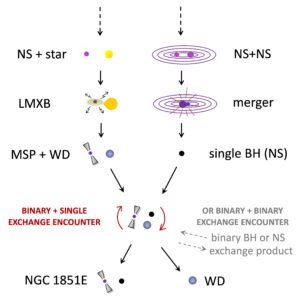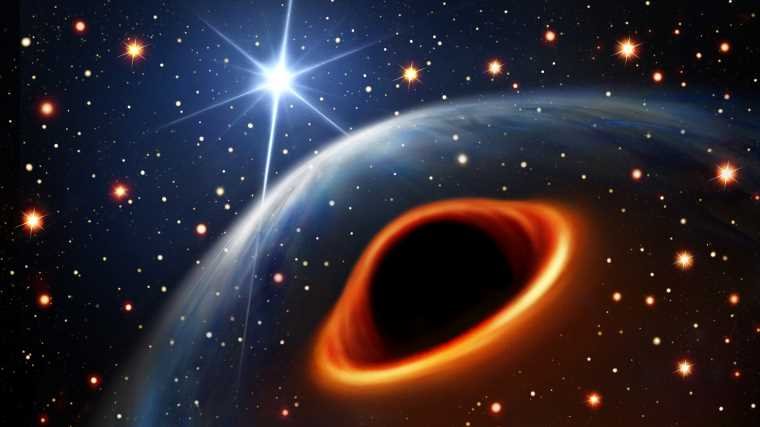Astronomers using a telescope array in South Africa have spotted a mysterious yet massive object within what astronomers term the “mass gap” between neutron stars and black holes, that also shares a binary orbit with a neutron star.
The fact that the mysterious object lies in this mass gap leads them to believe it is either the largest neutron star ever observed, the least massive black hole, or something else entirely. The discovery could have significant applications for understanding the “uncertain physics” underlying a range of massive cosmic objects.
Origin of Astronomical Compact Objects within the Mass Gap is Still Unknown


Objects of this size are typically categorized as “astrophysical compact objects,” and they generally come in one of two varieties: black holes or neutron stars. Still, there is an enormous mass gap between the smallest black hole and the largest neutron star. For example, the largest neutron stars range between 2.2 to 2.5 solar masses, while black holes smaller than 5 solar masses are considered extremely rare. The result is a mass gap where these objects simply should not be.
As a result, discovering a compact astronomical object situated within this gap is a major event. Astronomers Ewan Barr and Arunima Dutta from the Max-Planck-Institut für Radioastronomie, who made the discovery, say that previous objects in this mass gap have also been spotted, but “the nature of these objects and the mechanisms through which they formed remain unknown.”
The astronomers made the discovery while scanning a globular cluster known as NGC 1851 using the Karoo Array Telescope (MeerKAT) in South Africa. There, they spotted a pulsar in a binary orbit with an unknown compact object with a mass that landed in the lower range of the mass gap.
“The nature of these mass gap objects is unknown, as is the formation of their host binary systems,” the researchers write in the study detailing their findings. They also point out that the companion’s mass of 2.09 to 2.71 (solar masses) is in the mass gap, “indicating either a very massive NS (Neutron Star) or a low-mass BH (Black Hole).”
Finding Could Have Major Implications for Unknown Physics
The research team theorizes that these types of systems evolve from collisions between neutron stars that result in a binary system with a millisecond pulsar (MSP) and a Neutron Star. However, they think that given the correct conditions, “the same exchange process could also produce an MSP–black hole (BH) binary system.”
“We propose that the companion formed in a merger between two earlier (Neutron Stars),” they explain.
Canadian Institute for Theoretical Astrophysics researcher Maya Fishbach, who wrote a perspective piece to accompany the published study outlining the finding, says that even though the object’s origin is still unknown, the fact that it lies within this huge gap is incredibly significant.
“Regardless of its origin … the discovery of a compact object with a mass between 2.09 and 2.71 solar masses in a globular cluster has fascinating implications,” Fishbach explained.


For example, the researchers involved feel that studying these types of systems could have numerous help unravel some of the remaining unsolved mysteries in astrophysics. “Observing such systems allows their component masses to be measured and can test theories of Gravity,” they explain.
“It could inform understanding of the uncertain physics of extremely dense nuclear matter, of supernova explosions, or of dynamical interactions such as neutron star mergers inside globular clusters,” adds Fishbach.
Christopher Plain is a Science Fiction and Fantasy novelist and Head Science Writer at The Debrief. Follow and connect with him on X, learn about his books at plainfiction.com, or email him directly at christopher@thedebrief.org.

